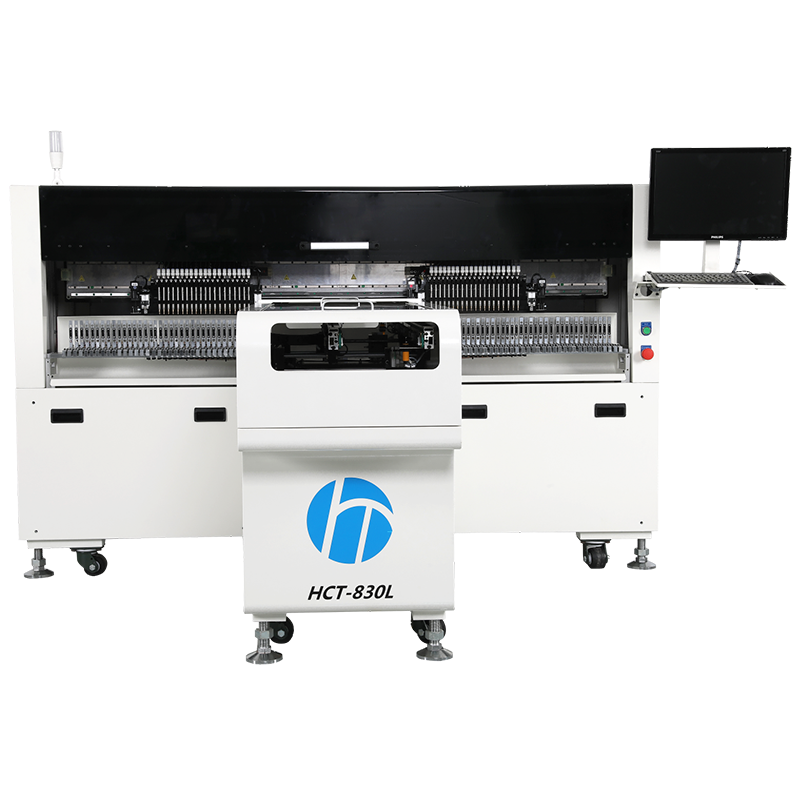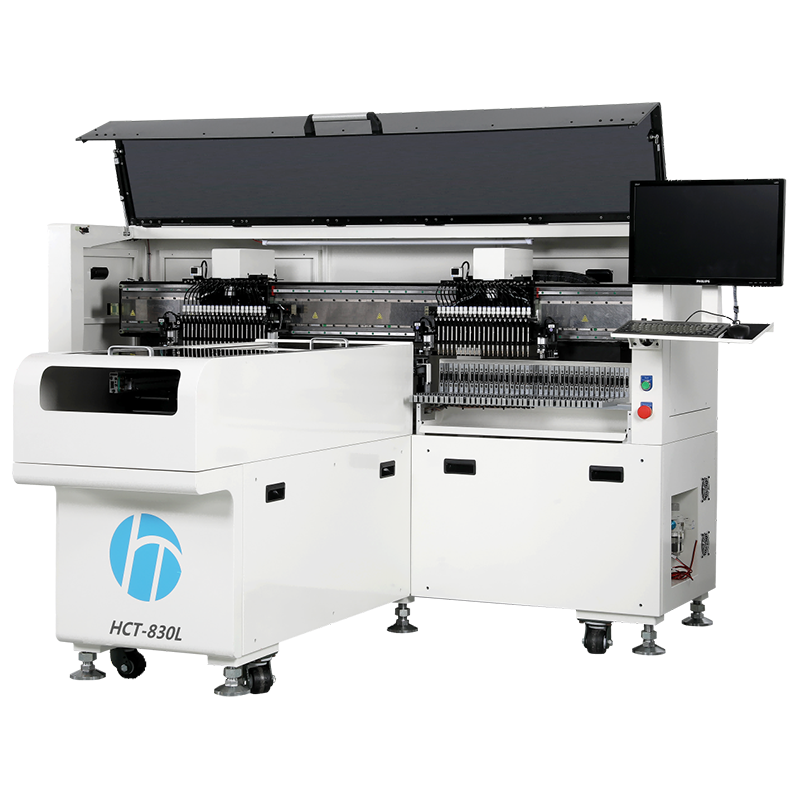E-Mail-Formatfehler
emailCannotEmpty
emailDoesExist
pwdLetterLimtTip
inconsistentPwd
pwdLetterLimtTip
inconsistentPwd


The Ultimate Guide to Choosing a Benchtop SMT Chip Mounter
In the fast-paced world of electronics manufacturing, the need for precision, efficiency, and reliability is paramount. Surface Mount Technology (SMT) has revolutionized the assembly process, and the benchtop SMT chip mounter is a critical component in this evolution. Whether you're a hobbyist or a small-scale manufacturer, understanding the nuances of these machines can significantly impact your production quality and efficiency. In this comprehensive guide, we'll explore everything you need to know about benchtop SMT chip mounters.
Introduction to Benchtop SMT Chip Mounters
A benchtop SMT chip mounter, also known as a pick-and-place machine, is designed to place surface mount devices (SMDs) onto printed circuit boards (PCBs) with high precision. These machines are essential for assembling electronic circuits in a compact and automated manner. Unlike larger industrial models, benchtop versions are more accessible for small businesses, educational institutions, and enthusiasts due to their compact size and relatively lower cost.
Why Choose a Benchtop SMT Chip Mounter?
1. Affordability: Compared to full-scale SMT lines, benchtop models are significantly less expensive, making them ideal for small-scale production.
2. Space Efficiency: These machines are designed to fit on a workbench, saving valuable floor space.
3. Ease of Use: The SMT chip mounters come with user-friendly interfaces, making them suitable even for those with minimal experience in electronics manufacturing.
4. Flexibility: Ideal for prototyping and small production runs, these machines can handle various component types and sizes.
Key Features of Benchtop SMT Chip Mounters
When choosing a benchtop SMT chip mounter, several features are crucial to consider. These features ensure that the machine meets your specific needs and provides reliable performance.
Placement Accuracy
One of the most critical aspects of an SMT chip mounter is its placement accuracy. High precision ensures that components are placed correctly on the PCB, which is vital for the functionality and reliability of the final product. Look for machines with advanced vision systems and fine pitch capabilities to achieve the best results.
Speed and Throughput
The speed of a benchtop SMT chip mounter is measured in components per hour (CPH). While high speed is desirable, it's essential to balance speed with accuracy. Ensure that the machine can handle the required throughput for your production needs without compromising on precision.
Component Versatility
A good benchtop SMT chip mounter should support a wide range of component sizes and types, including resistors, capacitors, ICs, and even phone chip mounters for mobile device applications. This versatility allows for greater flexibility in the types of projects you can undertake.
Software and Interface
User-friendly software and interface are critical for efficient operation. Look for machines with intuitive controls, robust software features, and good customer support. Some models also offer integration with CAD software, which can streamline the process from design to production.
Maintenance and Support
Reliable customer support and easy maintenance are essential for minimizing downtime. Choose a manufacturer with a good reputation for customer service and availability of spare parts.
Top Benchtop SMT Chip Mounters in the Market
Several benchtop SMT chip mounters stand out in the market due to their features, performance, and user feedback. Here, we review some of the top models to help you make an informed decision.
Neoden 4
The Neoden 4 is a popular choice among small-scale manufacturers and hobbyists. It offers a good balance of speed and accuracy, with a placement rate of up to 10,000 CPH. Its four heads allow for simultaneous placement of multiple components, and it supports a wide range of SMDs.
Key Features:
- High precision placement with a vision system
- Four simultaneous placement heads
- Supports various component sizes, including phone chip mounter applications
- User-friendly software interface
Charmhigh CHM-T48VB
The Charmhigh CHM-T48VB is known for its affordability and robust performance. With a placement speed of 12,000 CPH, it is suitable for small to medium-sized production runs. It also features a vision system for enhanced accuracy and supports a wide range of components.
Key Features:
- High-speed placement up to 12,000 CPH
- Vision system for precise component placement
- Compatible with various SMDs, including phone chip mounters
- Easy-to-use software
Manncorp MC384
The Manncorp MC384 is a versatile benchtop SMT chip mounter designed for high precision and flexibility. It supports a wide range of components, from small passives to large ICs, and is equipped with a vision system to ensure accurate placement.
Key Features:
- Advanced vision system for high accuracy
- Supports a wide range of component sizes
- Suitable for prototyping and small production runs
- Robust software integration with CAD systems
Setting Up Your Benchtop SMT Chip Mounter
Proper setup of your benchtop SMT chip mounter is crucial for optimal performance. Here are the key steps to ensure your machine is ready for production.
Workspace Preparation
Ensure that your workspace is clean, well-lit, and free from dust and debris. A stable, level surface is essential to maintain the accuracy of the machine. Additionally, consider implementing ESD (Electrostatic Discharge) protection measures to safeguard sensitive electronic components.
Machine Calibration
Calibration is vital for achieving precise component placement. Follow the manufacturer's instructions for calibrating the machine, which typically involves setting up the vision system, aligning the placement heads, and configuring the software.
Component Loading
Load the components into the machine's feeders according to the manufacturer's guidelines. Ensure that the components are correctly oriented and securely placed to avoid misfeeds or placement errors. Label each feeder to streamline the setup process and reduce the risk of errors during operation.
Software Configuration
Configure the software with your PCB design files. This process involves importing the Bill of Materials (BOM) and the placement coordinates. Some software allows direct integration with CAD programs, simplifying this step. Verify that all settings are correct before starting the production run.
Troubleshooting Common Issues
Even with the best benchtop SMT chip mounters, issues can arise. Here are some common problems and their solutions.
Misaligned Components
If components are not placed correctly, check the calibration of the vision system and placement heads. Ensure that the PCB is securely positioned and that there are no obstructions in the placement area. Recalibrate the machine if necessary.
Feeder Jams
Feeder jams can occur if components are not loaded correctly or if there is debris in the feeder mechanism. Clean the feeders regularly and ensure that components are properly seated. If jams persist, inspect the feeders for wear and replace them if needed.
Software Errors
Software issues can often be resolved by updating the software to the latest version. Check the manufacturer's website for updates and patches. If problems continue, contact customer support for assistance.
Tips for Maximizing Efficiency
To get the most out of your benchtop SMT chip mounter, consider the following tips:
Regular Maintenance
Regular maintenance is essential to keep your machine running smoothly. Follow the manufacturer's maintenance schedule, which typically includes cleaning the machine, lubricating moving parts, and inspecting for wear and tear.
Training and Skill Development
Investing in training for yourself or your team can significantly improve the efficiency and quality of your production. Many manufacturers offer training programs and online resources to help you get the most out of your machine.
Optimize Your Workflow
Streamline your workflow by organizing your workspace, labeling components, and preparing PCBs in advance. Efficient workflow management can reduce setup time and minimize errors.
Stay Updated with Industry Trends
The electronics manufacturing industry is constantly evolving. Stay informed about the latest trends, technologies, and best practices to ensure that your production processes remain competitive and efficient.
Future Trends in Benchtop SMT Chip Mounters
The field of SMT chip mounting is continuously evolving, driven by advancements in technology and changing market demands. Here are some trends to watch for in the future.
Increased Automation
Future benchtop SMT chip mounters are likely to incorporate more automation features, reducing the need for manual intervention and increasing production efficiency. This could include advanced robotics, AI-driven vision systems, and automated feeder systems.
Enhanced Connectivity
As the Internet of Things (IoT) continues to grow, SMT chip mounters are expected to become more connected. This could enable real-time monitoring, predictive maintenance, and seamless integration with other manufacturing systems.
Sustainable Manufacturing
Sustainability is becoming increasingly important in electronics manufacturing. Future benchtop SMT chip mounters may focus on reducing energy consumption, minimizing waste, and using environmentally friendly materials.
Miniaturization and High-Density Placement
As electronic devices become smaller and more complex, the demand for miniaturized components and high-density placement will increase. Future machines will need to handle these challenges with greater precision and reliability.
Conclusion
Choosing the right benchtop SMT chip mounter is crucial for ensuring the success of your electronics manufacturing projects. By understanding the key features, top models, and setup processes, you can make an informed decision that meets your specific needs. Regular maintenance, ongoing training, and staying updated with industry trends will help you maximize the efficiency and longevity of your machine. As technology advances, the capabilities of benchtop SMT chip mounters will continue to improve, offering even greater opportunities for innovation and growth in the electronics manufacturing industry.
Incorporating a benchtop SMT chip mounter into your workflow can significantly enhance your production capabilities, whether you're prototyping new designs or running small-scale manufacturing. By following the guidance provided in this comprehensive guide, you'll be well-equipped to choose, set up, and maintain your benchtop SMT chip mounter, ensuring high-quality results and efficient operations.

